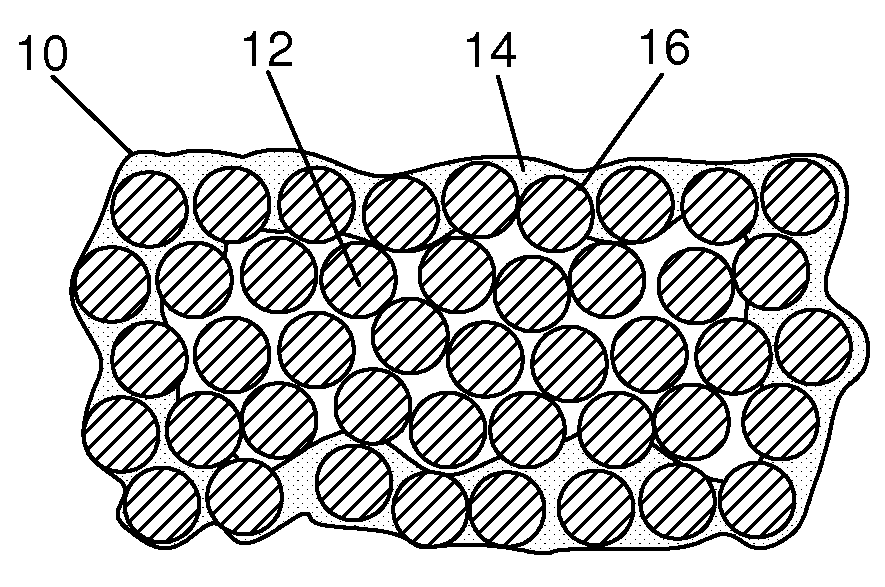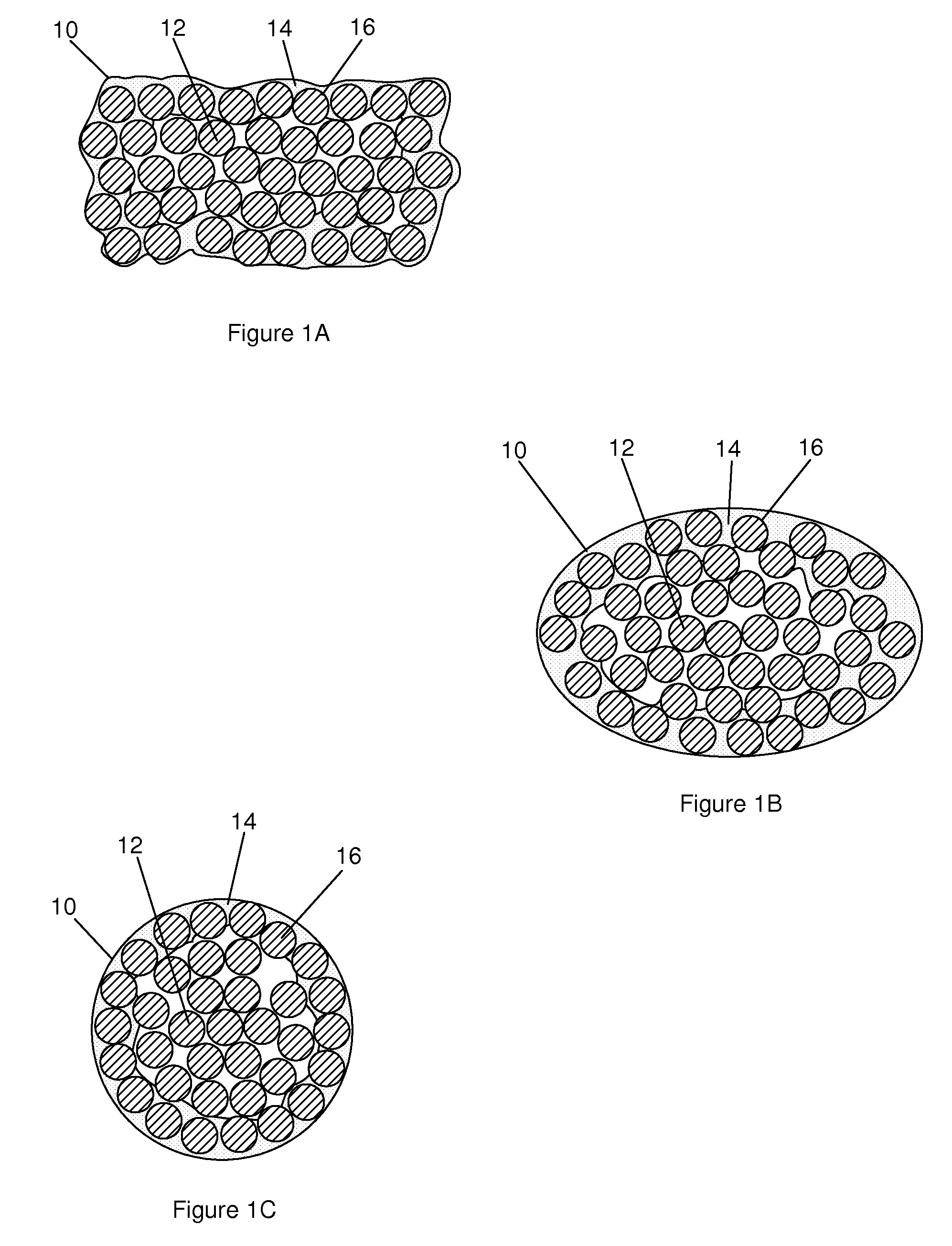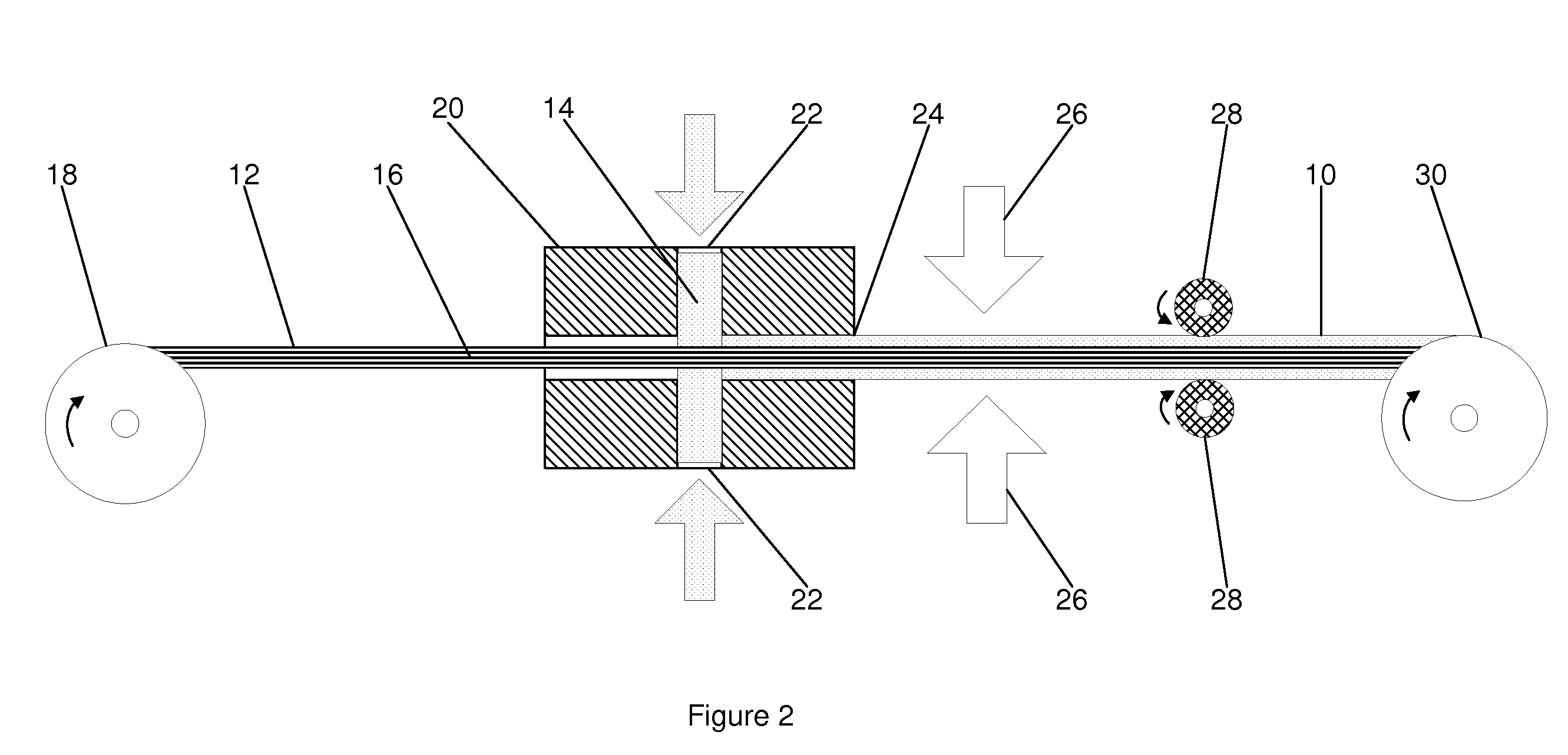Flexible composite prepreg materials
a composite material and flexible technology, applied in the field of prefabricated materials, can solve the problems of difficult uniform coating of fibers, stiff fabrics, and rigid thermoplastic prepregs, and achieve the effects of improving interlaminate shear properties, improving thermal conductivity through thickness, and cost saving
- Summary
- Abstract
- Description
- Claims
- Application Information
AI Technical Summary
Benefits of technology
Problems solved by technology
Method used
Image
Examples
Embodiment Construction
[0039]Reducing the bulk of the prepreg without sacrificing the flexibility and other properties of the prepreg is an important advantage of the present invention. This is accomplished by suitably modifying the fiber architecture of the tow before coating the fibers with resin material.
[0040]Thermoplastic resin is a preferable matrix resin because the impact strength of the molded products made from them are good and the molded products can be made by any molding process such as hot press molding. The preferred thermoplastic resin includes polyamide (PA); polyesters such as polyethylene terephthalate (PET), polybutylene terephthalate (PBT), polyphenylenesulfide (PPS), polytrimethylene terephthalate (PTT), polyetherketone (PEK), polyetheretherketone (PEEK), polyetherketoneketone (PEKK), polyarylate polyethylene (FE), polypropylene (PP), Acrylonitrile butadiene styrene (ABS); polyoxymethylene (POM), polycarbonate (PC), polymethylenemethacrylate (PMMA), polyvinyl chloride (PVC), polyphe...
PUM
| Property | Measurement | Unit |
|---|---|---|
| pressure | aaaaa | aaaaa |
| pressure | aaaaa | aaaaa |
| pressure | aaaaa | aaaaa |
Abstract
Description
Claims
Application Information
 Login to View More
Login to View More - R&D
- Intellectual Property
- Life Sciences
- Materials
- Tech Scout
- Unparalleled Data Quality
- Higher Quality Content
- 60% Fewer Hallucinations
Browse by: Latest US Patents, China's latest patents, Technical Efficacy Thesaurus, Application Domain, Technology Topic, Popular Technical Reports.
© 2025 PatSnap. All rights reserved.Legal|Privacy policy|Modern Slavery Act Transparency Statement|Sitemap|About US| Contact US: help@patsnap.com



